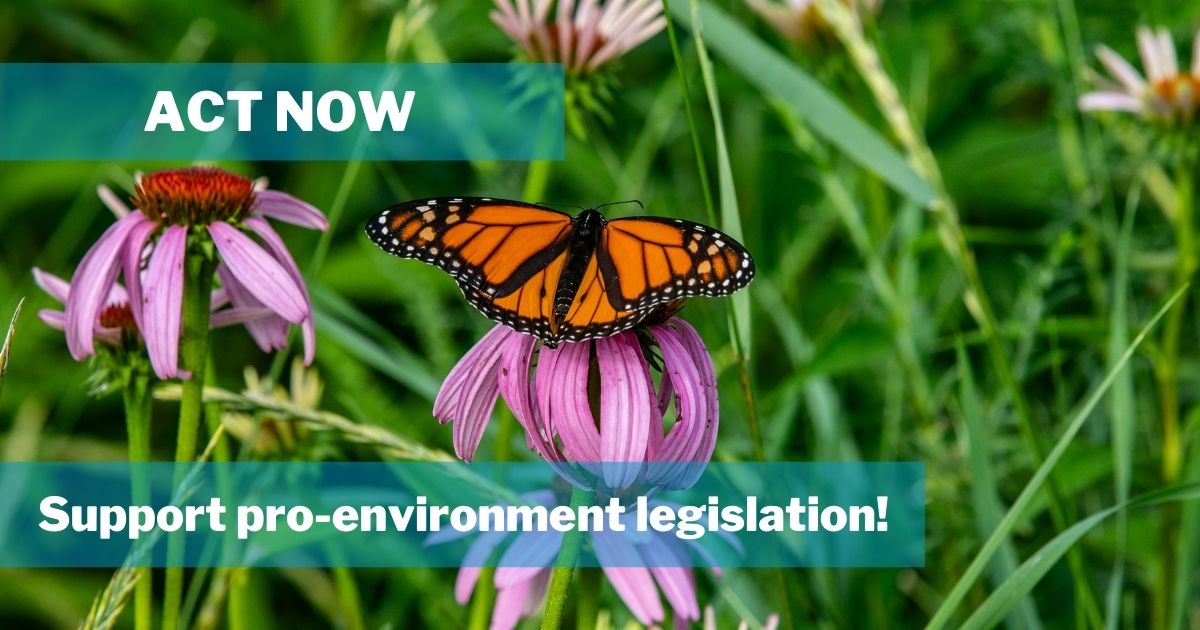Action Alert: Support the House Environment and Natural Resources Omnibus bill [CLOSED]
First, we know that this busy week in the Minnesota Legislature comes at a heavy time for our state, with the recent police killing of Daunte Wright and the verdict in the Derek Chauvin trial. Before diving into the environmental issues before us, please take a moment to see how you can weigh in on the issues of police accountability and reforms at the capitol or read more from FMR.
--
The Minnesota House of Representatives is about to take up one of the most important pieces of pro-environment legislation in recent memory. This bill will limit pollution, improve human health, protect our drinking water supply, restore ecosystems, prevent further environmental injustice and address the climate crisis.
Please take a moment to contact your representative in support of this bill.
The House Environment and Natural Resources Omnibus bill addresses five key areas of environmental funding and policy in Minnesota:
The Environment & Natural Resources Trust Fund (Articles 2 & 3)
This bill includes both FY21 and FY22 appropriations from the Environment & Natural Resources Trust Fund (ENRTF). These bills include many excellent provisions, including FMR pollinator habitat projects at River Heights Park (Inver Grove Heights), Mississippi River Gorge Regional Park (Minneapolis) and Ole Olson Park (Minneapolis), as well as funding for FMR's work to restore the Bruce Vento Nature Sanctuary (St. Paul), Applewood Park (Maplewood) and Carver Preserve (Maplewood).
Environment & Natural Resources Appropriations (Article 1)
- Funding for Soil and Water Conservation Districts (SWCDs): Requiring a small fee on certain housing filings is a step toward equitable and consistent funding for Soil & Water Conservation Districts regardless of zip code.
- Establishing a Soil Health Cost Share Program and appropriation of $1 million to this Board of Water & Soil Resources program.
Pollution Control (Article 4)
- Section 9,10, 31: Requires cumulative impacts analysis of new or expanded projects seeking permits on communities living in environmental justice areas.
- Section 41: Requires labeling accuracy regarding compostable products.
- Section 42: Prohibits food packaging that contains PFAS.
Natural Resources (Article 5)
- Section 30: Prohibits the use of neonicotinoid insecticides or chlorpyrifos in wildlife management areas, state parks, state forests, aquatic management areas (AMAs), or scientific and natural areas (SNAs).
- Section 56, 58, 90: Adds "natural carbon sequestration" to the list of qualities for which the forests should be managed and acknowledges the important role forests play in mitigating climate change.
- Section 69: Requires non-toxic (lead-free) shot on wildlife management areas in farmland zones.
- Section 85: Maintains Minnesota's drinking water supply by prohibiting bulk transport of water further than 50 miles from where it is appropriated.
Water and Soil Resources (Article 6)
- Section 2: Establishes a Lawns to Legumes program to increase pollinator-friendly habitat.
- Section 5: Establishes a soil-healthy farming goal that at least 30 percent of Minnesota farmland implement cover crops, perennial crops, no-till, or managed rotational grazing by 2030.
This bill provides much-needed policy and funding support for our environment. Please urge your representative to support this bill.
Take Action
This Action Alert is no longer available. Sign up to be a River Guardian and we'll keep you updated when the river needs your support. Visit our Legislative Updates Blog to learn about similar issues.
Have feedback about the River Guardians program or advocating with FMR? Leave us a comment.
